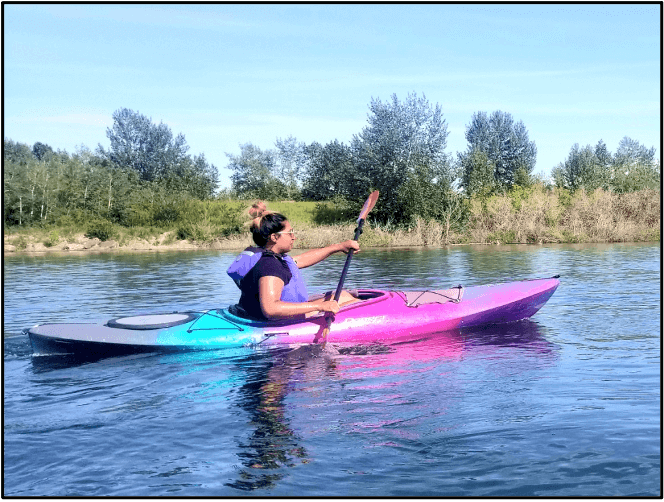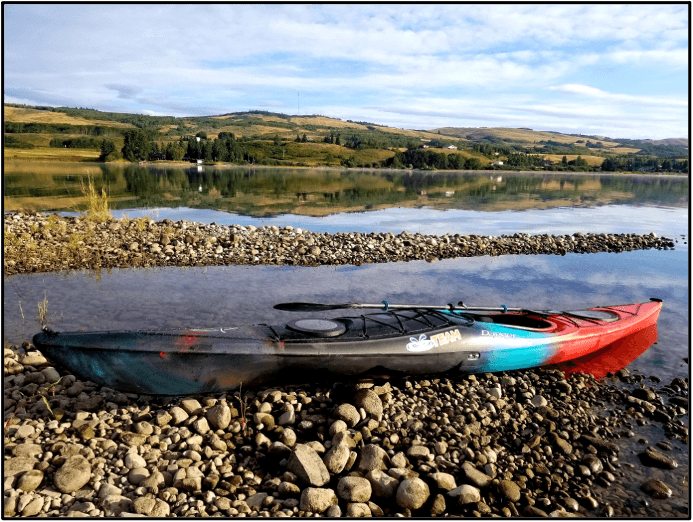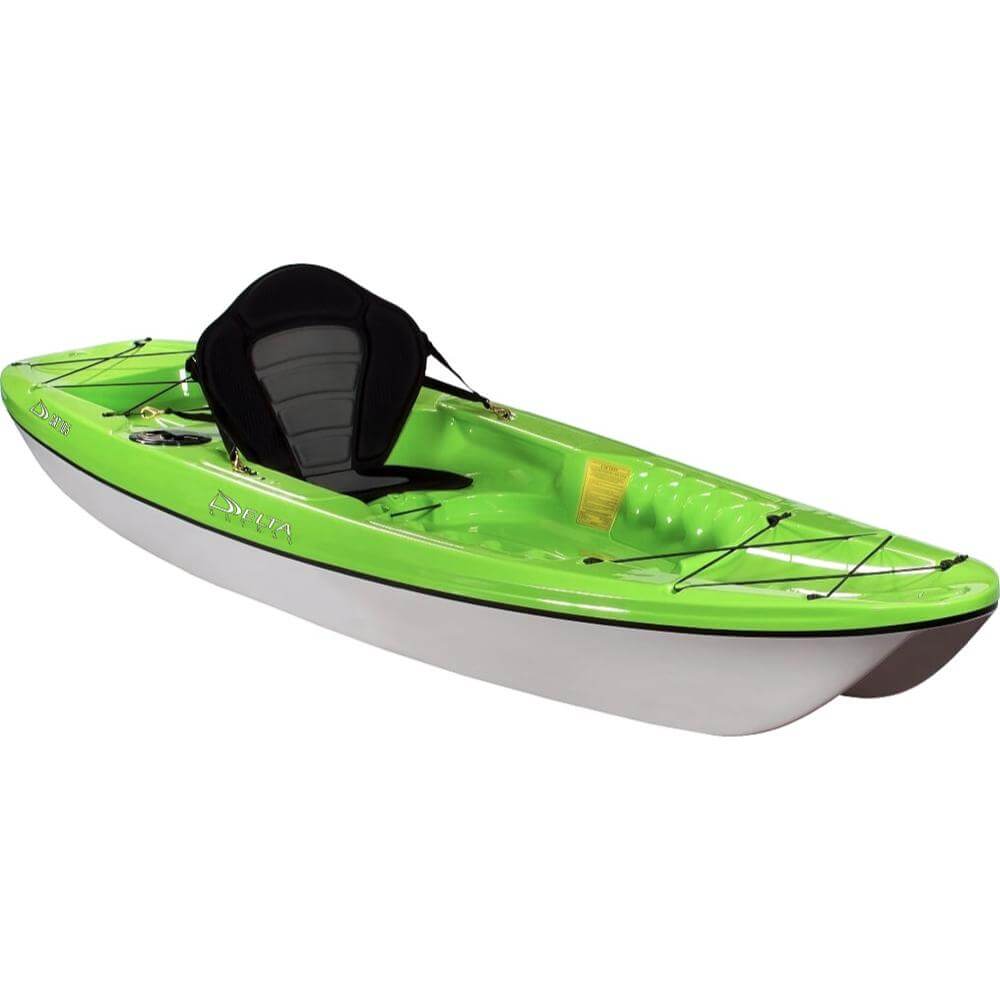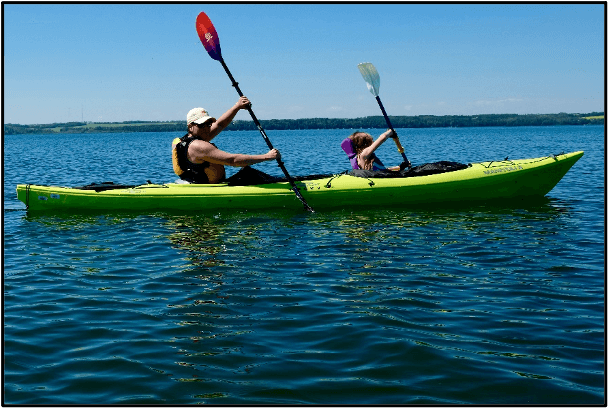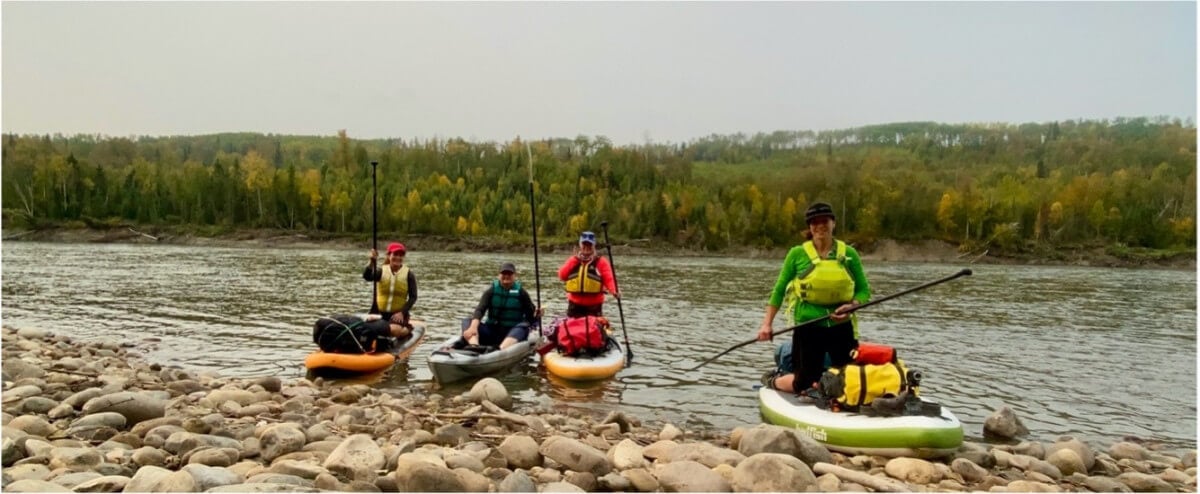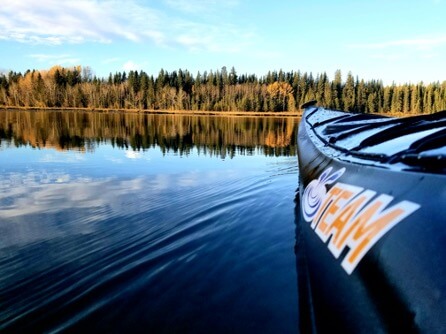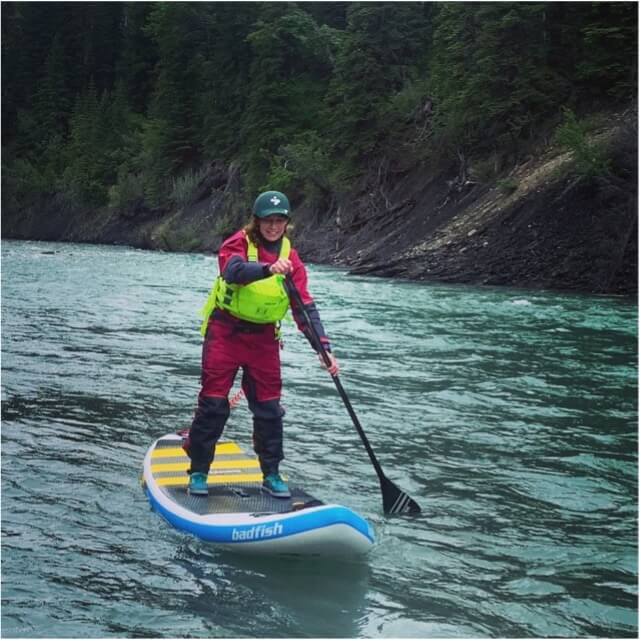Maybe you’ve seen some paddling pics--or watched videos online--or even seen kayakers out on a lake. This has you thinking about choosing a recreational or touring kayak. Determining what you actually need for the sport can be complicated and feel overwhelming.
My first blog of 2021 offers simple answers if you’re thinking about flat water kayaking and need some basic info to help you navigate all the options.
How to Choose the Right Kayak for Lakes – Recreational or Touring?
What Kind of Kayaking Will You Do?
Finding the right kayak that checks all the boxes starts with first thinking about the kind of kayaking trips you want to do.
Some kayakers are interested in sticking close to home and finding calm protected local lakes for an enjoyable short paddle. Others may want to head out to larger lakes with more challenging conditions and paddle for several hours. Still others may want to add in some easy river floats and on slow moving water.
To get yourself geared up as a new kayaker you’ll have to consider your needs, wants and luxuries. The focus in this article is on your needs.
-
The Kayak
There are four basic styles of kayaks for flat water or easy rivers: Recreational, Day Touring, Sit on Top, and Tandem.
Recreational Kayak
Recreational kayaks are a great option for new paddlers interested in short distances on calm flatwater, or trips down easy rivers.
They typically have one sealed bulkhead behind the cockpit as a storage area to keep items such as extra clothes, lunch, and other basics protected and dry. Recreational kayaks generally have ample room in the cockpit and a higher back on the seat outfitting.
These kayaks offer new paddlers a feeling of stability and confidence when first heading out on the water.
Day Touring Kayaks
Touring kayaks are designed for paddlers who are interested in single or multi-day trips. They have lots of storage in the bow and stern and are separated from the cockpit by sealed bulkheads.
Due to the narrow and streamlined design of touring kayaks, the cockpit may feel tighter and more confining at first. Touring kayaks have a back band, as opposed to the tall seat back in the recreational style kayaks. This touring style of outfitting accommodates a spray skirt to keep water out of the cockpit. This gives a paddler the opportunity to kayak in more adverse conditions, edge the boat when turning or develop skills such as rolling the kayak.
Fitted with a drop-down skeg or rudder to support tracking, touring kayaks are longer and narrower, making them super-efficient to paddle over longer distances.
Sit on Top Kayaks
Sit on Top kayaks are the most user-friendly style of kayak and offer paddlers a different feel with a slightly higher paddler view when on the water.
As a bonus, casting fishing lines is super easy with this versatile kayak, for those interested in kayak fishing.
Because they are very stable, sit on top kayaks are easy to get in and out of, and are a pet friendly option. They do tend to be a bit heavier, weighing an average of 55-64 lbs. Based on the design, sit on top kayaks are virtually unsinkable and are a great option for short excursions.
Tandem Kayaks
For families or couples who want to paddle literally together, tandem kayaks are a great option.
Tandem kayaks range from 13’ to 20’ and come in a variety of options (roto-mold plastic, thermoform and inflatable). Depending on the material, tandem kayaks range in weight from 70-80 lbs.
Tandem kayaks offer increased storage depending on the design. Some are single cockpit while others have two separate cockpits. Each design has its own differences in the number of dry storage compartments and bulkheads.
The shorter single cockpit versions can be paddled by one paddler. Additionally, there are tandem inflatable kayaks which come in shorter lengths and weigh less. Tandem kayaks offer ease of paddling and are great for quick on the water excursions. Longer tandem kayaks are the better option for multi-day excursions.
Important Characteristics in a Recreational /Touring Kayak
|
Kayak Type |
Length |
Width |
Hull Design |
|
Recreational Kayaks |
· Shorter on average, generally 9’-12’ · Easier to turn · More maneuverable on the water, particularly with shorter length boats · Easier to store and transport |
· Wider, averaging between 26”-31” · Added width offers more primary stability · Larger cockpits make it easier to get in/out
|
· Manufactures strive to find the best blend of flat bottom profile and V shape · Hull designs strive to offer enhanced primary stability without compromising tracking · Some have pontoon hull design for enhanced stability
|
|
Touring Kayaks |
· Longer kayaks averaging 12’-14’6” · More streamlined · Better tracking · Increased storage capacity for multi-day trips · Don’t turn as quickly as shorter boats. · Storage and transport considerations
|
· Narrower, ranging between 23”-25” · Faster on the water due to narrower design |
· More aggressive V shaped hull cuts through the water better, · Faster, more streamlined · May feel less stable for a new paddler at first but has more secondary stability needed in rougher conditions |
|
Sit on Top Kayaks |
· Range in length from 10’5” – 12’3” · Longer boat length offers better tracking · Easier to store and transport |
· Wider kayak, generally between 30”-34” · Wider boat offers stability · Slower on the water due to width/weight |
· Flat bottom hull design · Hull design and stability make it easier to get in and out of · Less secondary stability, particularly in rougher conditions |
|
Tandem Kayaks |
· Lengths vary from 13’-20’ · Tracks well · Storage and transport considerations
|
· Slightly wider than touring kayaks, averaging 26”-31”
|
· V shaped hull design · More streamlined · Combined hull design/length/width offers increased stability
|
What are Kayaks Made Out Of?
-
Plastic
Some kayaks are made out of roto-mold plastic. While they weigh more, they are super durable and often come in at a more affordable price point. Plastic boats are heavier, so you’ll need to consider if the weight is manageable when it comes to carrying and loading your kayak.
-
Thermoform
Thermoform kayaks are certainly a lighter option, so it’s easier to load and carry the kayak, but they are a bit more costly. As far as durability, a bit more care is needed but thermoform boats are a close second in terms of durability. Because they are lighter they are easier to paddle, which is important to remember when comparing similar boat designs.
-
Inflatable
Finally, there are inflatable kayaks. While slower on the water, they are light weight and portable. Gear storage is limited but most are equipped with bungies, tie downs, or tuck space under the bow/stern splash decks. These great designs are easy to transport and fit into a bag or backpack, so storage isn’t an issue.
-
Kayak Paddle
There is a wide range of paddles for you to choose from depending on the kind of kayaking you will be doing. Paddle length and weight, material (nylon, fiberglass, carbon fibre and other variations) along with the shaft design (straight or bent shaft) all play into your paddle choice.
Contact AQ Outdoors for more information about the paddle that is best for your needs.
-
PFD
Wearing a PFD is mandatory and a critical piece of your kayaking gear. With varied styles of PFDs--full back, high mesh backs, varied pockets, front or side entry--it’s best to try several PFD’s to find the best fit for you.
Also check that it is compatible with your kayak’s seat design.
-
Safety Gear
Finally, kayak safety gear is essential and enhances your enjoyment and peace of mind while out on the water. In the event you or a fellow kayaker capsize, being able to attract help with the blow of a whistle, use a throw line to rescue or tow someone to safety, re-entering your kayak using a paddle float, and pumping out water from a sit-in cockpit are all important for your safety.
For more information, check out this video: Beginner's Guide to Recreational Kayak Gear
Deciding where to go is easy using https://paddlingmaps.com/, which offers paddlers of various skill sets and interests some great paddling destinations to explore.
It is super helpful to test out some kayak options if you are still unsure what kind of boat is for you.
AQOutdoors offers some great courses and evening kayak rentals to help you sort it all out.
Check out some of these options at AQ Outdoors Paddling Courses
Get yourself started by thinking about the kind of paddling you want to do and explore your gear “needs.” It’s the first step toward connecting with the fantastic community of paddlers and starting your own life-long kayaking journey.
There are as many reasons to kayak as there are paddlers. Find a boat that’s great for you and discover your own treasured moments on the water.
“create your own momentum”
Bryan Hume
https://www.facebook.com/bryan.hume.5/
https://www.instagram.com/brhume.yyc/
Related Recreational and Touring Kayak Articles
Recreational vs Touring Kayak Buying Guide
Essential Recreational Kayaking Gear
Beginners Guide to Recreational Kayaking Gear
Basic Paddle Stokes for Recreational and Touring Kayaking
High vs Low Angle Kayak Paddle Advice
AQ Outdoors Contact
Edmonton: (p) 780 463-4892 (e) info@aquabaticsedmonton.com
Calgary: (p) 403 288-9283 (e) info@aqoutdoors.com





















































